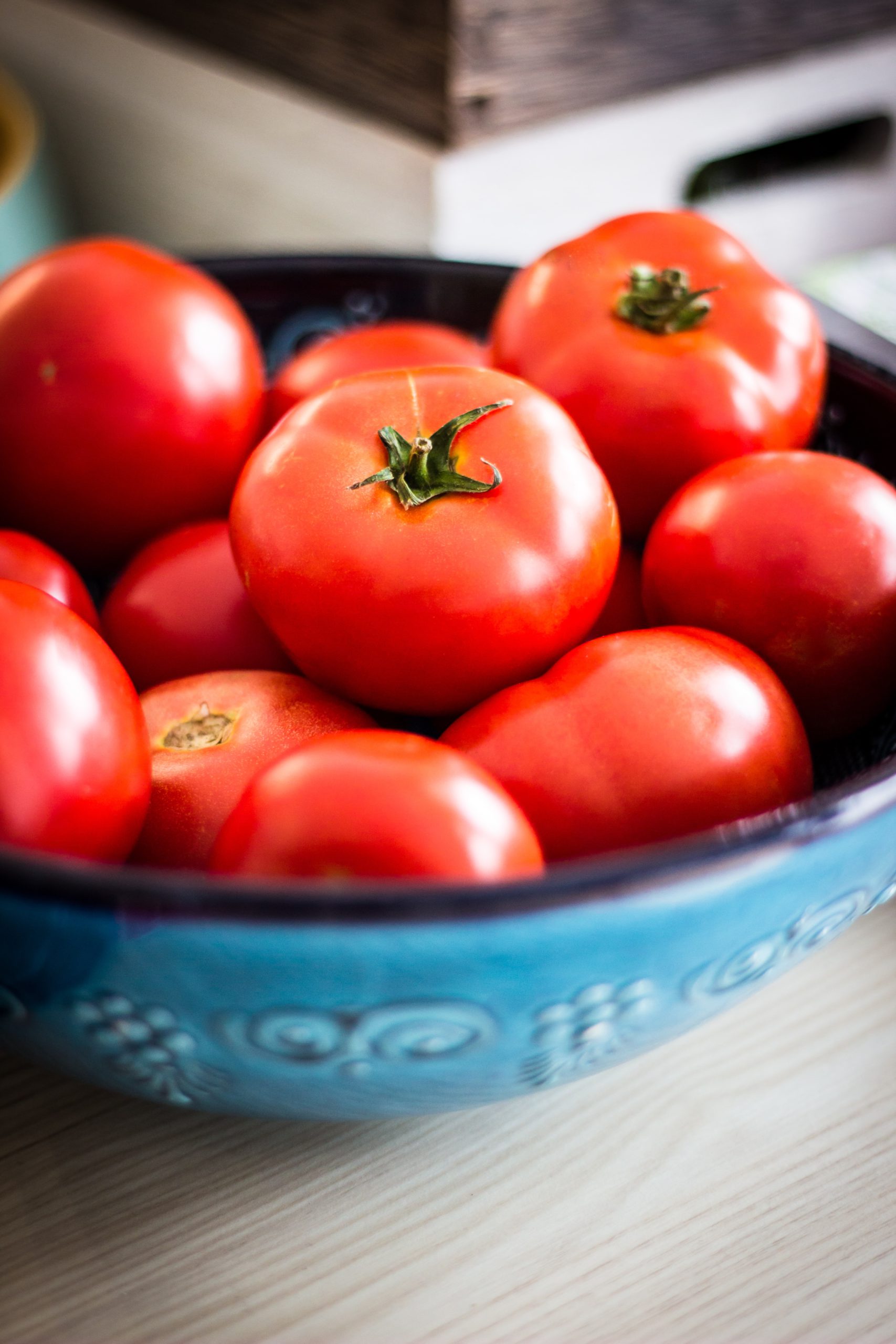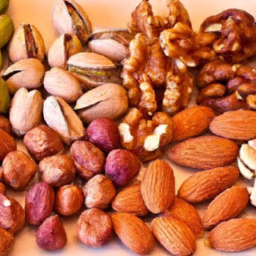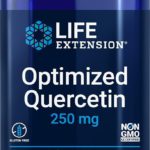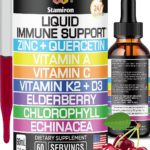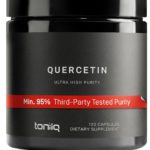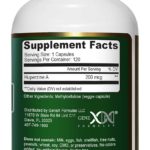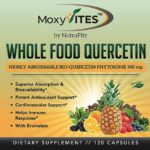Looking to incorporate more palmitoylethanolamide (PEA) into your diet? Well, you’re in luck! PEA is a naturally occurring compound that holds potential therapeutic properties and is commonly found in various foods. As a member of the endocannabinoid family, PEA is believed to play a role in modulating the immune response and promoting overall well-being. In this article, we will explore some of the top foods that are high in palmitoylethanolamide, allowing you to make informed choices for a healthier lifestyle.
Plant-Based Foods
Soybeans
Soybeans are a fantastic plant-based source of palmitoylethanolamide (PEA). Not only are they packed with essential nutrients, but they also contain a significant amount of PEA. Whether you enjoy them in the form of tofu, soy milk, tempeh, or edamame, incorporating soybeans into your diet can help boost your PEA intake and promote overall well-being.
Peanuts
Another excellent plant-based source of PEA, peanuts are a delicious and versatile addition to any diet. Whether you enjoy them in their natural form, as peanut butter, or in various dishes and snacks, peanuts offer a range of health benefits. They not only provide you with a good dose of PEA but are also rich in protein, healthy fats, and essential vitamins and minerals.
Pistachios
Pistachios not only make for a tasty snack but also offer a significant amount of PEA. These small, green nuts are packed with antioxidants, healthy fats, and fiber, making them a great addition to any plant-based diet. Whether you snack on them alone or sprinkle them over salads or desserts, pistachios can help increase your PEA intake while satisfying your taste buds.
Almonds
Almonds are not only a popular nut but also a fantastic source of PEA. These crunchy and nutritious nuts are loaded with healthy fats, fiber, protein, and an array of vitamins and minerals. Whether you enjoy them as a snack, sprinkle them on top of oatmeal or stir them into your favorite recipes, almonds provide a healthy dose of PEA to support your overall well-being.
Walnuts
Last but not least, walnuts are another plant-based food high in PEA. These brain-shaped nuts offer a unique combination of healthy fats, antioxidants, fiber, and essential nutrients. Whether eaten on their own, added to salads, or incorporated into baked goods, walnuts can help elevate your PEA intake and support brain health.
Animal-Based Foods
Eggs
When it comes to animal-based sources of PEA, eggs are an excellent choice. Not only are eggs a versatile ingredient that can be prepared in countless ways, but they are also rich in PEA and other essential nutrients. Whether you like them scrambled, boiled, poached, or used in baking, eggs provide a good amount of PEA and can be enjoyed as part of a healthy and balanced diet.
Milk
Milk, particularly cow’s milk, is another animal-based food that contains PEA. Whether you prefer dairy milk or opt for plant-based alternatives like almond milk or soy milk, these beverages provide a notable amount of PEA along with other vital nutrients. Enjoy a glass of milk with your breakfast or use it as an ingredient in various recipes to boost your PEA intake.
Cheese
If you’re a cheese lover, you’ll be pleased to know that cheese is also a good source of PEA. Whether you enjoy soft cheeses like brie and camembert or hard cheeses like cheddar and parmesan, you can satisfy your cravings while increasing your PEA levels. Just be mindful of portion sizes and choose varieties that align with your dietary preferences and needs.
Chicken
Chicken, particularly the meat from lean cuts like chicken breast, is a great animal-based source of PEA. Whether you prefer grilled, roasted, or sautéed chicken, including this lean protein in your meals can provide you with a significant amount of PEA along with essential amino acids and other nutrients. Make sure to choose high-quality, organic, or pasture-raised chicken for optimal health benefits.
Beef
Beef is another animal-based food that contains a notable amount of PEA. Whether you savor a juicy steak, enjoy a homemade burger, or cook up a comforting beef stew, beef can contribute to your overall PEA intake. Opt for lean cuts and grass-fed beef whenever possible to maximize the nutritional value and promote sustainable and ethical farming practices.
Fish
Salmon
Salmon is a highly nutritious and delicious fish that is also rich in PEA. Packed with heart-healthy omega-3 fatty acids, vitamins, and minerals, salmon is not only a great source of PEA but also offers numerous health benefits. Whether you grill it, bake it, or enjoy it raw in sushi, incorporating salmon into your diet can support brain function, reduce inflammation, and promote overall well-being.
Tuna
Tuna, whether fresh or canned, is another fish that contains a significant amount of PEA. It is not only a convenient and versatile seafood option but also a rich source of lean protein, omega-3 fatty acids, and various vitamins and minerals. Whether you enjoy tuna in salads, sandwiches, or sushi rolls, it can provide you with a boost of PEA while nourishing your body.
Mackerel
Mackerel is an oily fish that boasts a high concentration of PEA along with other essential nutrients. Known for its distinct flavor and richness, mackerel is commonly used in Asian and Mediterranean cuisines. Whether you grill it, smoke it, or include it in hearty fish stews, mackerel can be a delicious way to increase your PEA intake and promote heart health.
Sardines
Sardines, although tiny in size, pack a powerful nutritional punch. These oily fish are a great source of PEA, omega-3 fatty acids, calcium, and vitamin D. Whether you enjoy them fresh or canned, sardines can be grilled, added to salads, or even mashed onto toast for a quick and nutritious meal. Incorporating sardines into your diet can help boost your PEA levels while supporting bone health and overall well-being.
Anchovies
Anchovies may not be everyone’s favorite, but they are a rich source of PEA. These small, saltwater fish offer a concentrated dose of PEA along with omega-3 fatty acids, protein, and other essential nutrients. Often used as a flavoring ingredient in sauces, dressings, and pizza toppings, anchovies can add a unique umami taste and boost your PEA intake.
Seeds and Nuts
Flaxseeds
Flaxseeds are small nutritional powerhouses that are high in PEA. Packed with omega-3 fatty acids, fiber, and lignans, flaxseeds offer a range of health benefits. Whether you sprinkle ground flaxseeds over yogurt, add them to smoothies, or use them as an egg substitute in baking, incorporating flaxseeds into your diet can help support cardiovascular health, digestive function, and PEA levels.
Chia seeds
Chia seeds are another fantastic source of PEA. These tiny black or white seeds are rich in omega-3 fatty acids, antioxidants, fiber, and protein. Whether you mix them into puddings, add them to overnight oats, or incorporate them into baked goods, chia seeds can provide a nutrient boost while increasing your PEA intake.
Hemp seeds
Hemp seeds are a complete source of protein and also contain a notable amount of PEA. With their nutty flavor and creamy texture, hemp seeds can be enjoyed in various ways. Whether you sprinkle them over salads, blend them into smoothies, or incorporate them into energy bars, hemp seeds are a nutritious addition to any diet.
Pumpkin seeds
Pumpkin seeds, also known as pepitas, are not only tasty but also rich in PEA. These nutritious seeds are packed with antioxidants, healthy fats, and essential minerals. Whether roasted and enjoyed as a snack, sprinkled over salads, or used as a garnish for soups and stews, pumpkin seeds offer a delightful crunch and provide a good dose of PEA.
Sunflower seeds
Sunflower seeds are a versatile snack that also happens to be high in PEA. These small seeds are rich in healthy fats, vitamin E, and other essential nutrients. Whether you munch on them as a snack, sprinkle them over salads, or use them in baking, sunflower seeds can contribute to your overall PEA intake and support optimal health.
Avocado
Avocado is a unique fruit that not only tastes delicious but also contains a small amount of PEA. Packed with healthy monounsaturated fats, fiber, vitamins, and minerals, avocados offer numerous health benefits. Whether you enjoy avocado in guacamole, sliced on top of toast, or blended into smoothies, it can be a satisfying and nutritious way to increase your PEA intake.
Olive Oil
Olive oil is not only a staple in Mediterranean cuisine but also contains a small amount of PEA. Known for its heart-healthy properties, olive oil is rich in monounsaturated fats, antioxidants, and anti-inflammatory compounds. Whether you use it for cooking, drizzle it over salads, or use it as a dip for bread, incorporating olive oil into your diet can contribute to increased PEA levels and overall well-being.
Dark Chocolate
Good news for chocolate lovers! Dark chocolate, especially the varieties with high cocoa content, contains a small amount of PEA. Packed with antioxidants, dark chocolate not only satisfies your sweet tooth but also offers various health benefits. Whether you enjoy it on its own, use it in baking, or sprinkle it over desserts, dark chocolate can provide a delightful indulgence while contributing to your PEA intake.
Legumes
Lentils
Lentils, a type of legume, are a fantastic plant-based source of PEA. These small, lens-shaped legumes are rich in protein, fiber, and various essential nutrients. Whether you enjoy them in soups, stews, curries, or salads, incorporating lentils into your diet can provide a good source of PEA while supporting digestive health and balanced nutrition.
Kidney beans
Kidney beans, another legume variety, contain a significant amount of PEA. These vibrant beans are not only delicious but also provide a generous dose of protein, fiber, and essential minerals. Whether you include kidney beans in chili, stews, or as a filling for wraps and tacos, they can be a nutritious addition to your meals while boosting your PEA levels.
Chickpeas
Chickpeas, also known as garbanzo beans, are a versatile legume that contains PEA. Whether you enjoy them in hummus, roasted as a snack, or used as a base for curries and stews, chickpeas offer a good amount of protein, fiber, and various vitamins and minerals. Incorporating chickpeas into your diet can help increase your PEA intake while providing valuable nutrients.
Black beans
Black beans are another legume variety that contains a notable amount of PEA. Rich in protein, fiber, and antioxidants, black beans offer numerous health benefits. Whether you include them in soups, salads, or as a filling for burritos and tacos, black beans can be a delicious and nutritious addition to your meals while supporting your overall well-being.
Soy products
Soy products, such as tofu, tempeh, and soy milk, are excellent plant-based sources of PEA. In addition to their PEA content, soy products are also rich in protein, healthy fats, and various essential nutrients. Whether you use tofu in stir-fries, enjoy tempeh as a meat substitute, or drink soy milk in smoothies or as a dairy alternative, incorporating soy products into your diet can provide a good dose of PEA and support optimal health.

Whole Grains
Quinoa
Quinoa, a gluten-free whole grain, contains a small amount of PEA. Not only is quinoa a complete source of protein, but it is also rich in fiber, vitamins, and minerals. Whether you use it as a base for salads, mix it into pilafs, or substitute it for rice in various recipes, quinoa can offer a nutrient-dense addition to your meals while contributing to your PEA intake.
Brown rice
Brown rice, a whole grain alternative to white rice, also contains a small amount of PEA. Packed with fiber, vitamins, and minerals, brown rice offers more nutritional value than its refined counterpart. Whether you use it as a side dish, in stir-fries, or as a base for grain bowls, brown rice can be a nutritious choice that supports balanced nutrition and increased PEA levels.
Oats
Oats are a popular whole grain that not only provides sustained energy but also contains PEA. Whether you enjoy them in the form of oatmeal, overnight oats, or baked goods, oats are rich in fiber, vitamins, minerals, and antioxidants. Incorporating oats into your breakfast routine or using them in various recipes can support digestive health, heart health, and increased PEA levels.
Barley
Barley, a versatile and nutritious whole grain, contains a small amount of PEA. Packed with fiber, vitamins, minerals, and antioxidants, barley offers various health benefits. Whether you use it in soups, stews, salads, or as a side dish, incorporating barley into your meals can provide a good source of PEA while supporting digestive health and overall well-being.
Buckwheat
Buckwheat is a gluten-free whole grain that contains a notable amount of PEA. Whether you enjoy it in the form of buckwheat groats, flour, or soba noodles, buckwheat offers a unique nutty flavor and various health benefits. Packed with protein, fiber, and essential nutrients, incorporating buckwheat into your diet can be a tasty and nutritious way to increase your PEA intake.
Herbs and Spices
Turmeric
Turmeric is not only a vibrant spice but also contains a small amount of PEA. Known for its anti-inflammatory properties, turmeric is rich in curcumin, which offers numerous health benefits. Whether you use it in curries, soups, or golden milk lattes, incorporating turmeric into your cooking can not only add flavor but also support overall well-being.
Ginger
Ginger, a popular spice, contains a small amount of PEA. Known for its aromatic and spicy flavor, ginger also offers various health benefits. Whether you use it in stir-fries, teas, or baked goods, ginger can add a zest of flavor while contributing to your overall PEA intake.
Cinnamon
Cinnamon is not only a warm and comforting spice but also contains a small amount of PEA. Packed with antioxidants and anti-inflammatory properties, cinnamon offers numerous health benefits. Whether you sprinkle it over oatmeal, swirl it into coffee or create delicious baked goods, incorporating cinnamon into your diet can add flavor and increase your PEA levels.
Oregano
Oregano is a flavorful herb that contains a small amount of PEA. Known for its robust and aromatic taste, oregano is commonly used in Mediterranean and Italian cuisines. Whether you sprinkle it over pizzas, use it in pasta sauces, or add it to roasted vegetables, oregano can not only enhance the taste of your dishes but also offer potential health benefits.
Rosemary
Rosemary is an herb that not only adds a fragrant aroma to dishes but also contains a small amount of PEA. Known for its distinct flavor, rosemary is a popular seasoning choice for various recipes. Whether you use it in roasted meats, flavor olive oil, or incorporate it into homemade bread, rosemary can elevate the taste of your dishes while providing a potential dose of PEA.
Incorporating these foods into your diet can help increase your palmitoylethanolamide (PEA) intake. Whether you follow a plant-based lifestyle or include animal-based foods in your diet, there are plenty of options to choose from. Remember to prioritize a balanced and varied diet to ensure you receive a wide range of nutrients and support your overall well-being. Enjoy exploring these food choices and discovering new flavors while nourishing your body with PEA-rich options!
